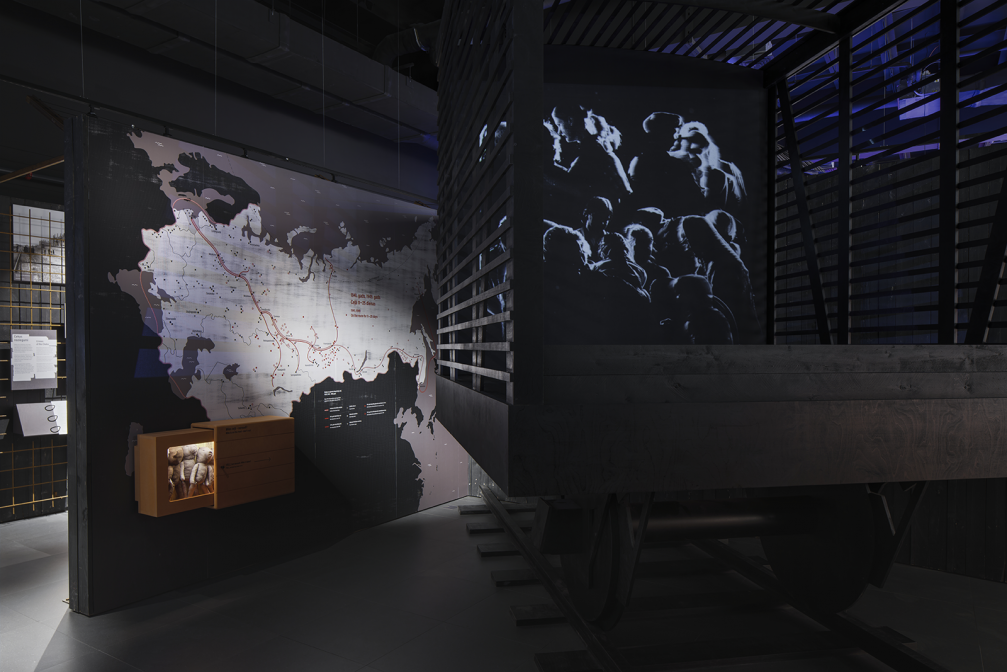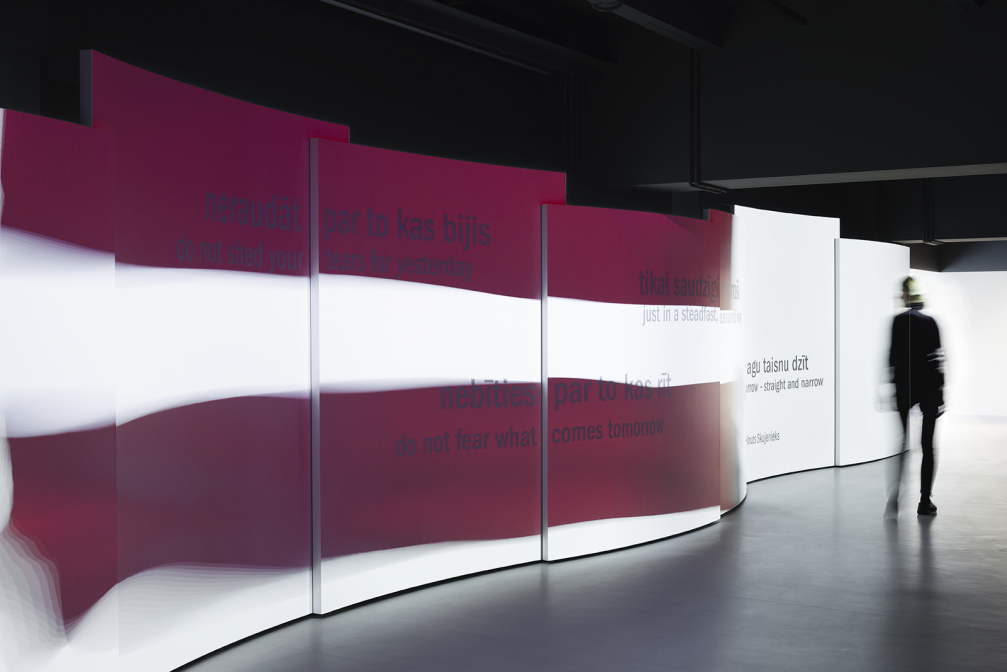
At the beginning of June, a new permanent exhibition, created by design studio H2E, was opened at the Museum of the Occupation of Latvia. The exhibition reveals both the facts and the emotional side of this dark chapter in Latvia’s history.
«This is a story about light. About half a century of longing — when the eye could not see the light, our souls remembered it. From the bright pre-war state through the darkness of the occupation to the dignified light of today,» Ingūna Elere, the leading designer of H2E, tells about the concept of the new exhibition of the Museum of the Occupation. Darkness against light — this metaphor that everyone can understand, allows the exhibition to be perceived not only with the mind, but also on an emotional level.
The exhibition begins in pre-war Latvia — in a bright and open space, where a mirror image of the visitor appears among the memories of the newly established country. Further on, the path leads through a labyrinth of darkness, which reveals the events which swallowed Latvia and its residents with the signing of the Molotov-Ribbentrop Pact in 1939. According to H2E, the exhibition is designed as an experience — by initially defining the emotions that the designers wanted to invoke at each stage of the exhibition, the historical facts are turned into a story that is understandable to every visitor. Even if you look at the exhibition superficially, you can feel the gravity of the events. Lights, sounds, and projections, as well as different fonts that refer to different stages of occupation emphasise this effect. It is possible that the gloomy feelings while visiting the museum are fuelled by the war in Ukraine, but as I walked through the maze of darkness I kept feeling a lump in my throat.


The restrictive nature of the labyrinth’s corridors will be felt by every guest of the museum. «Similarly to the visitor of the exhibition, every Latvian family has taken this path against their will,» Ingūna explains. It is sometimes difficult to navigate the exhibition which resembles a collage, but this format allows one to experience the story, both by rushing through the exhibition and by exploring each exhibit, testimony or memory in depth. I happened to try it out myself — at first, I went through the exhibition quickly to get the overall impression, but immediately after that I wanted to return to the beginning to get to know the story in more detail.
H2E’s designers have also paid attention to the museum’s youngest visitors. The exhibition has a special «thread» that can help children to comprehend historical events. In each section of the exhibition, children can follow the experience of the Teddy bear Miks with the help of interactive exhibits. This «thread» is accompanied by a book, in which history is revealed in letters written by Miks’ friends. The book also includes a guide for parents that can help explain the exhibition.
After going through the dark corridors, the visitor comes to light again. In the part of the exhibition dedicated to the restoration of Latvia’s independence you can breathe freely again and look back at the period of occupation from the balcony that rises above the maze of darkness. From here you can see the whole thing — both literally and figuratively. Above the maze, as if offering some distance, facts that summarise the terrible events of the past are revealed — just as the true scale of the tragedy could only be revealed after the occupation ended. In this part of the exhibition, visitors can also confront themselves, weighing both their values as well as their place in history and the present day.
















Viedokļi